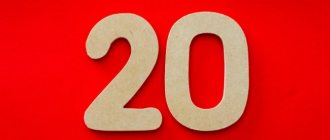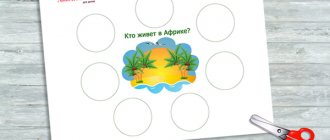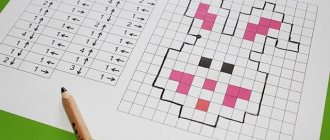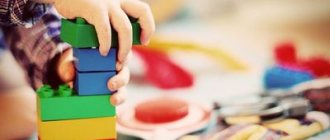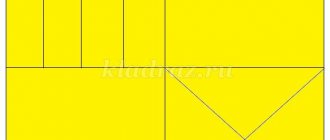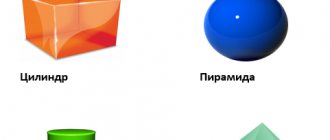We offer for you and your preschool children 5-6 years old examples for counting to 10 in colorful pictures. Such examples are interesting to solve. Simply print out the free worksheets and let your child decide. By devoting 20-30 minutes a day to counting and mathematics, 2-3 times a week, you will perfectly prepare your preschooler for school.
On our website you can download math assignments for free and print them out. Most of the tasks are decorated with colorful drawings and the child will find it interesting to study.
These materials are perfect for children to review the material they have covered during the summer holidays. Repetition of counting, logic, solving examples of addition and subtraction.
Entertaining mathematics in pictures
Entertaining math material for preschool children.
All preschool children are real little explorers. They discover the whole world that surrounds them. Teachers and parents should work together to support the child in these explorations. They should try to maintain and develop the preschooler’s desire for knowledge and satisfy the desire for active activity, constantly fueling interest in the process of studying the world around him. Math games for preschoolers will be an excellent help with this.
The role and purposes of mathematical games
It is obvious that from birth a child needs to develop all his muscles. But they are not the only ones that require attention. The mind also needs constant training. After all, a person who is able to think logically easily copes with solving all life problems. He is able to make decisions faster, find a way out of difficult situations, and is more mobile and efficient.
The role of didactic games in the mathematical development of preschool children is great. It is through them that the knowledge of mathematics as a science and passion for it begins.
To develop logical thinking and mathematical abilities (and one is closely related to the other), it is necessary to use special games. This is the only way to instill an interest in mathematics.
The main goals of learning mathematics in the game for preschoolers:
· development of logical thinking;
· development of independence and the ability to solve problems without the help of adults;
· formation of interest in creative and cognitive activity;
· accumulation of logical and mathematical experience;
· familiarity with basic mathematical concepts from a very young preschool age;
· familiarity with basic operations: addition, subtraction, counting, etc.
Important!
You cannot stop using didactic games in middle and older preschool age. For the full development of mathematical abilities, it is necessary to train children year after year.
Types of tasks in mathematics
Preschool children are divided into three age groups:
junior (3-4 years), middle (4-5 years), senior (5-6 years). It happens that there is another group - preparatory - which includes children 6-7 years old. It is in accordance with the age category that it is necessary to select didactic games for young mathematicians.
Didactic activities are divided into the following:
· games;
· puzzles;
· joke tasks;
· puzzles;
· work with geometric material.
Important!
You should not play educational games in mathematics for too long. This is especially true for younger preschoolers. Initially, it is enough to conduct such exercises for 5 minutes a day.
DIY didactic games
To enhance the cognitive interest of students, teachers try to attract their attention in all possible ways. To achieve this goal, many parents and educators develop do-it-yourself math books for preschoolers. To make them, you can use any available material:
· fabric, threads, buttons;
· natural materials;
· stationery;
· imagination, it is given special importance in the creative process.
Examples include the following games:
· “Find the odd one out.” The game is played with the goal of analyzing geometric shapes, the ability to compare them and find what is superfluous. Children are asked to analyze rows of geometric shapes cut out of cardboard or other material and find the mistake in it. It may consist, for example, in finding a triangle among circles or distinguishing a figure from others by color.
· “Who are the neighbors.” This game requires only one additional item - a ball. With its help, the skill of naming neighbors of numbers is improved. Children stand in a circle, the teacher throws the ball and calls a random number. The child must catch the ball and name its neighbors.
· "Harvesting". The goal of this game is to develop the skill of comparing objects by size. Two baskets are placed in front of the children. You need to put large fruits and vegetables in one of them, and small ones in the second.
· Mathematical games for perception and memory training
· The most popular game is "Confusion". It is suitable for preschoolers of all age groups. Its meaning is as follows: cards with numbers from 1 to 9 are laid out on the table in random order. The child must arrange them in ascending or, conversely, descending order. For the little ones, you can use two or three numbers, gradually increasing the number of cards.
· “Clap your hands.” A very simple and interesting game. The teacher calls any number, and the child must clap his hands as many times as there are units in this number.
· "Do not snooze!". Cards with numbers are laid out on the table in front of the child, which are easy to make yourself. The teacher tells a fairy tale in which various numbers appear. As soon as any of them sounds, the children must quickly pick up the corresponding card.
Modern interactive tasks also play an important role in the development of mathematical abilities in preschool children through play activities. They must be selected taking into account the Federal State Educational Standard and correspond to the age category of the pupils.
Mathematical problems for ingenuity
Mathematical problems requiring ingenuity occupy a place of honor among all tasks. Children really like such exercises and develop a flexible, plastic mind and intelligence.
Examples:
· “There are 4 corners in the room, a cat sits in each corner, and opposite each cat there are 3 cats. How many cats are there in the room? (4 cats);
· “An animal has 2 right legs, 2 left legs, 2 legs in front, 2 in back. How many legs does he have? (total 4);
· “There were 7 brothers walking, each brother had one sister. How many people walked? (8 people);
· “7 boys cleared 1 path in the garden. How many paths did the boys clear?” (7 tracks).
Riddles, comic problems, entertaining questions
Such tasks, as a rule, arouse the greatest interest among children. This category includes both fun, simple tasks and didactic number composition games for preschoolers.
Examples:
· “Continue the phrase: if Sasha left the house before Seryozha, then Seryozha...” (left the house later than Sasha).
· “Guess the riddle in verse:
There's a puppy sitting on the porch
Warms his fluffy side.
The second one came running
And he sat down like a hero. How many puppies are there?
· “Grandma Dasha has a granddaughter Masha, a cat Fluff, and a dog Druzhok. How many grandchildren does grandma have?”
· The significance of such exercises: children are introduced to active mental activity and master the necessary counting skills. Thanks to such tasks, numeracy skills are developed quietly and in a light-hearted manner.
· Important!
All games and tasks must be selected taking into account the age group of the students. Young children will not be able to cope with difficult tasks, which can lead to a loss of interest in the subject and even a decrease in self-esteem.
· Older people, on the contrary, will not want to think about tasks that are too easy. They will simply not be interested in them. As a result, there may be a misconception about mathematics - children will consider it too difficult, older children - easy.
· All types of didactic games in mathematics contribute to the development of interest in numbers, problems and counting in children, starting from a very early age. With mathematical and logical thinking skills, a child’s adaptation to school is much faster. In the process of studying, children learn to reason, analyze and generalize the information received.
Examples for addition and subtraction up to 10
Preparing for school is necessary and important! The ability to quickly solve examples within 10 will be very useful for your child at school. To practice this skill, we have prepared practice sheets with examples of addition and subtraction within 10.
Solving such examples at speed is not only interesting, but also extremely useful for a future first-grader. Print out the exercise sheets and explain the task. The child needs to solve all the examples on one sheet as quickly as possible. To track your progress, write down the due date and time on your worksheet.
After completing the task, generously praise your child for his efforts, even if he made some mistakes, because he is just learning!
After some time, you can print this sheet again and have a math competition. Therefore, keep all printouts and assignments already completed to assess your child's progress.
Mathematical progression and number sequence for children
The number series is a kind of exercise in mathematical logic, the first acquaintance with the sequence of numbers. Part of the exercise is addition, part is subtraction. That is, it is an arithmetic progression.
These cards are designed to help children learn numbers, counting, subtracting and adding. Kids can review these math concepts at home in a fun way. Teachers can also use them in the classroom.
